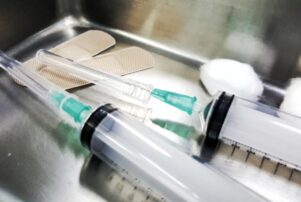Although it’s an out-dated term, “plastic surgery” is still commonly used by the public to describe common procedures in “cosmetic surgery” (the correct, modern term): rhinoplasty, liposuction and the like. But while plastic surgery may no longer be an operative term (pun intended), it may have acquired a completely new meaning because of the prevalence of plastic medical devices in the healthcare industry, specifically those parts produced through plastic injection molding. These plastic medical parts can be applied to nearly any healthcare sector where durable, sterilization-friendly parts are required at high volume and maximum accuracy. In fact, surgical device manufacturers, as well as other healthcare-related manufacturers, have found that plastic injection molding is the most effective way to attain the quality and costs they need to compete to today’s healthcare environment.
Medical device plastic injection molding is ideal for applications such as:
- Implantable components such as heart valves, hip joint sockets, etc.
- Beakers, test tubes and other lab equipment
- Surgical components and equipment
- Drug delivery equipment and components
- Cost-effectiveness: Hands-down, when medical parts, components and devices are required in large volumes, plastic injection molding will be the most cost-effective option nine times out of ten.
- Unequaled accuracy: “Zero-tolerance” production is critical in medical device manufacturing, where tiny mistakes can make the difference between success or failure.
- Material selection: Plastic injection molding can utilize a wide-range of resins and plastic-types, depending on the function of the finished piece.
- Durability: Time was, when steel was the “go-to” material for medical device manufacture. No longer. Plastics offer maximum strength and durability, can withstand harsh environments, vibration and brute force without breaking or failing in some other way. Many injection molding plastics also have the heat resistance to be repeatedly sterilized via autoclave and other processes.
- Contaminant resistance: The plastic materials used in medical device injection molding are designed to be contaminant-resistant and easily sterilized. Moreover, the injection molding process itself is easily able to meet FDA and foreign government regulations.
Simply put, plastics are the right prescription for today’s healthcare world!
